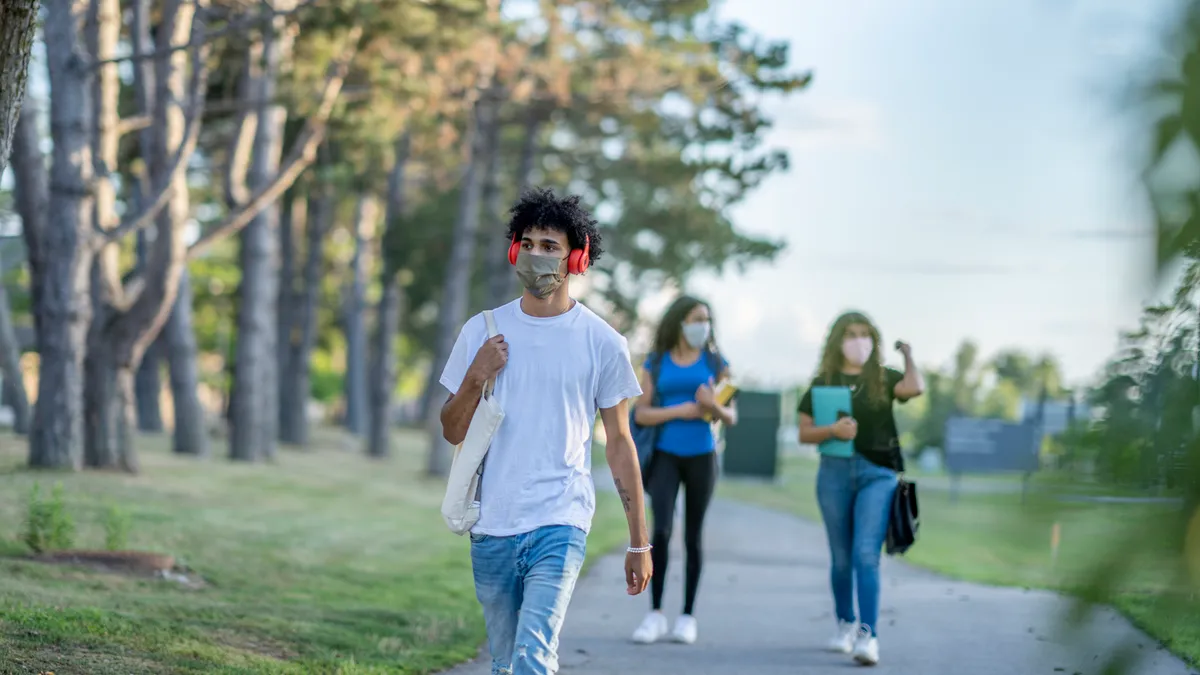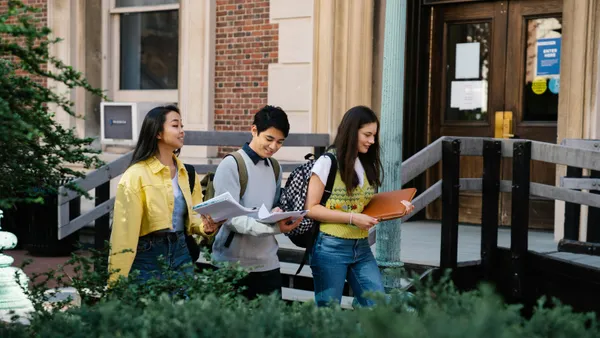Dive Brief:
-
First-year persistence rates, which measure whether incoming students continue into their second year, dropped to 73.9% in the fall of 2020, their lowest level since 2012, according to a new report from the National Student Clearinghouse Research Center.
-
The declines were driven by attrition at community colleges, where first-year persistence rates sank 3.5 percentage points to 58.5%. Private and public four-year colleges also saw their rates fall, though the losses weren't as severe.
-
The share of first-year students transferring to another institution by their second fall declined 1.5 percentage points from the decade average to 7.7%, signaling constrained student mobility, the report notes.
Dive Insight:
The report adds to mounting evidence that the pandemic hurt enrollment and made it harder for students, particularly those at community colleges, to persevere in their studies.
Of some 2.6 million students that started college for the first time in the fall of 2019, only 73.9% of them returned the next year. That rate is two percentage points lower than the prior year (75.9%), marking the single largest drop in first-year persistence since the Clearinghouse began tracking such data with the 2009 student cohort.
Attrition at community colleges drove the declines
Community colleges saw the largest decline, followed by private and public four-year colleges. Part-time community college students — whose first-year persistence rate dropped by 4.3 percentage points — were more likely to leave school than full-time students.
Part-time students saw the largest declines in persistence rates
Severe racial and ethnic disparities continued in 2020. Nearly 87% of Asian students persisted into their second years in the fall of 2020, compared to around two-thirds of Black and Latinx students.
Students pursuing an engineering bachelor's degree were the most likely to persist, followed by those in biological and biomedical sciences and health profession majors.
Retention rates, which measure whether a student continued studying at the institution where they began, also suffered. They fell 0.7 percentage points to 66.2%, another "unprecedented" decline, according to the report.
The report follows other research that revealed sliding enrollment over the past year. Around 600,000 fewer students headed to college in the spring than did the previous year, continuing a trend that was seen in the fall.
Some colleges are hopeful that their ability to hold more in-person classes as the pandemic eases in the U.S. will translate into more students on campus. However, it's still unclear if enrollment will rebound in the fall.
One recent poll of 200 high school seniors suggested their feelings are mixed on enrolling in higher ed. More than half, 59%, said the health crisis didn't affect how likely they were to enroll in college, while 23% said it made them more likely and 18% said it made them less likely.















